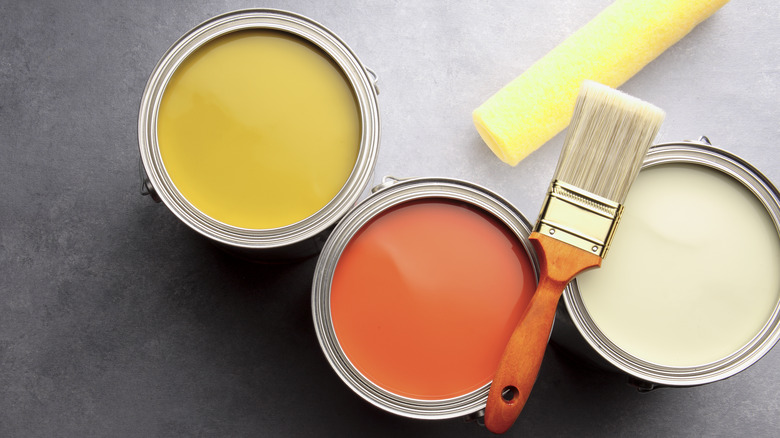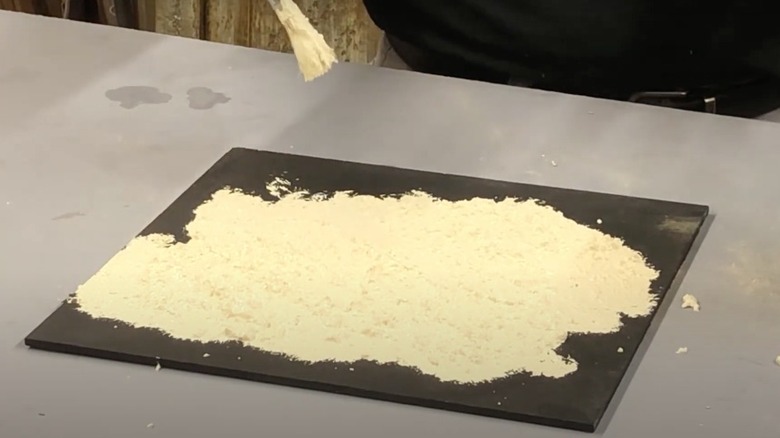This Secret Ingredient Will Give Your Paint A Thicker, Wood-Like Finish
Are you looking for a way to add a wood-like finish to your next DIY project but don't want to go through the excessive steps that come with recreating this type of faux veneer? Don't give up on your creative vision just yet! Paint is a versatile material, and mixing it with different ingredients can completely change the way it functions and looks when dry. Specifically, sawdust is one of the best additions for paint to achieve a textured finish that mimics the appearance of rustic wood. And one of the best parts of this trendy painting hack? It's eco-friendly and eliminates excess waste by breathing new life into ingredients that may have ended up in the trash otherwise.
Do-it-yourself enthusiasts know that sawdust is an inevitable part of working with wood, whether it be from sawing or sanding down the material. However, it's not uncommon for waste removal organizations to forbid these shavings from going in with regular trash pickup. Instead of letting piles accumulate around your garage, you can use leftover sawdust in many ways, like cleaning spills or as a makeshift firestarter. It is important to note that repeated exposure to wood dust can be hazardous to human and animal health. Be sure to wear a dust mask when working around sawdust for protection.
The foolproof way to use sawdust in paint
Achieving a textured finish on walls with paint can be challenging, but patience is key when it comes to this type of project. This is only exacerbated when trying to replicate a wood finish on surfaces like doors or outdoor furniture. Using sawdust as a paint additive is a simple process, and starting small is better than using too much. A good rule of thumb is to use around four tablespoons of sawdust per 6 to 8 ounces of paint. For larger-scale projects, you can use 1 cup of sawdust per 2 to 3 cups of paint. Exact measurements will vary depending on factors like the type of paint and environmental factors like humidity. This is why you should only add a small amount of dust to the paint before mixing and evaluating the texture. Continue adding more until you reach the desired thickness for your project.
Outside of DIY home and garden projects, sawdust paint is a common ingredient used to customize art projects. Some use the dust directly in their paint to add a three-dimensional, textured element to their art. Others use their wall art ideas in an outside-the-box way by gluing small pieces of wood and dust onto canvas to create a design. You can achieve a wood like finish on nearly any project if you take adequate time to prepare the paint and focus when applying it to a new surface.

